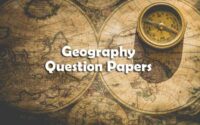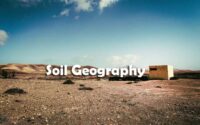Universe and Solar System Questions and Answers
Universe and Solar System Questions and Answers Papers pdf will be available here for download. Therefore, all the contenders can make use of this chance and start to download the Universe and Solar System Solved Question Papers. Because by solving the Universe and Solar System Objective Model Papers you can improve your knowledge.

Also, check for download the Universe and Solar System MCQ Papers with Solutions from the link provided below. The Universe and Solar System Quiz helps you to prepare well for the exam topic wise and obtain very good marks.
Therefore, go through this post thoroughly and download the Universe and Solar System Last Year Question Papers. All these questions on Universe and Solar System are collected from previous year papers and compiled by us.
Questions and Answers on Universe and Solar System
1. Which of the following does not belong to the solar system?
(A) Asteroids
(B) Comets
(C) Planets
(D) Nebulae
2. Which is the coldest among the following ?
(A) Mars
(B) Earth
(C) Pluto
(D) Mercury
3. The moon is showing its same face to the earth because
(A) It is not rotating about its own axis
(B) Its rotation and revolution are opposite
(C) Its periods of rotation and revolution are the same
(D) Its rotation is faster than its revolution
4. Among the following, the celestial body farthest from the Earth is
(A) Saturn
(B) Uranus
(C) Neptune
(D) Pluto
5. Pulsars are
(A) stars moving towards the Earth
(B) stars moving away from Earth
(C) rapidly spinning stars
(D) high temperature stars
6. Biggest planet of solar system is
(A) Earth
(B) Mars
(C) Saturn
(D) Jupiter
7. ‘Super nova’ is
(A) a comet
(B) an asteroid
(C) an exploding Star
(D) a black hole
8. Which planet in our solar system is nearly as big as the earth ?
(A) Mercury
(B) Mars
(C) Venus
(D) Pluto
9. Which of the following is called “Blue Planet” ?
(A) Saturn
(B) Earth
(C) Jupiter
(D) Mars
10. Which planet in our solar system is nearly as big as the earth ?
(A) Mercury
(B) Mars
(C) Venus
(D) Pluto
11. Which planets do not have satellites revolving around them ?
(A) Mars and Venus
(B) Mercury and Venus
(C) Mars and Mercury
(D) Neptune and Pluto
12. The planet which has the highest surface temperature is
(A) Jupiter
(B) Earth
(C) Pluto
(D) Venus
13. Light from the Sun reaches us in nearly
(A) 8 min
(B) 2 min
(C) 6 min
(D) 4 min
14. A spinning neutron star is known as
(A) White dwarf
(B) Black hole
(C) Pulsar
(D) Quasar
15. When the moon completely covers the sun, it is known as
(A) the Antumbra
(B) the Umbra
(C) the Penumbra
(D) None of these
16. The darkest portion of the shadow cast during an eclipse is
(A) Corona
(B) Umbra
(C) Penumbra
(D) Black hole
17. Which is the second nearest star to the Earth after the Sun?
(A) Vega
(B) Sirius
(C) Proxima Centauri
(D) Alpha Centauri
18. The outermost layer of the Sun is called
(A) Chromosphere
(B) Photosphere
(C) Corona
(D) Lithosphere
19. Which planet is called evening star?
(A) Mars
(B) Mercury
(C) Venus
(D) Jupiter
20. The planet revolving east to west is
(A) Venus
(B) Uranus
(C) Neptune
(D) Pluto
| Physical Geography | Atmosphere |
| Bio Geography | Earth landform |
| Soil Geography | Universe and Solar System |
| Hydrosphere |
21. The planet emitting green light is
(A) Jupiter
(B) Venus
(C) Uranus
(D) Neptune
22. The number of zodiacs is
(A) 10
(B) 12
(C) 13
(D) 11
23. Which of the following is known as the Morning Star?
(A) Saturn
(B) Jupiter
(C) Mars
(D) Venus
24. Which planet orbits closest to the earth?
(A) Mars
(B) Jupiter
(C) Venus
(D) Mercury
25. Solar energy is received by the earth through
(A) Conduction
(B) Radiation
(C) Convection
(D) refraction
26. The planets on either side of the Earth are
(A) Mars and Jupiter
(B) Mercury and Venus
(C) Venus and Saturn
(D) Mars and Venus
27. Which planet looks reddish in the night sky ?
(A) Jupiter
(B) Saturn
(C) Mars
(D) Mercury
28. Isohels are the isopleths of
(A) Sunshine
(B) flowering time
(C) rain
(D) clouds
29. Which one of the following is the largest planet ?
(A) Jupiter
(B) Venus
(C) Saturn
(D) Uranus
30. The mass of Jupiter is approximately
(A) one tenth of the solar mass
(B) one thousandth of the solar mass
(C) one hundredth of the solar mass
(D) half the solar mass
31. The planet nearest to the Sun is :
(A) Earth
(B) Mercury
(C) Mars
(D) Venus
32. On which of the following planets water cycle is available ?
(A) Jupiter
(B) Earth
(C) Mars
(D) Venus
33. The asteroids revolve round the Sun in between :
(A) Earth and Mars
(B) Mars and Jupiter
(C) Jupiter and Saturn
(D) Saturn and Uranus
34. Which of the following is called the twin of the earth ?
(A) Neptune
(B) Venus
(C) Mars
(D) Saturn
35. Which amidst the following planets has its orbit closest to Sun ?
(A) Venus
(B) Mars
(C) Jupiter
(D) Uranus
36. The light from the Sun reaches the Earth in about—
(A) 8 seconds
(B) 8 minutes
(C) 10 seconds
(D) 10 minutes
37. The surface temperature of the sun is estimated as
(A) 6000 °C
(B) 12000 °C
(C) 18000 °C
(D) 24000 °C
38. Which one of the following planets has no moon?
(A) Mars
(B) Neptune
(C) Mercury
(D) Pluto
39. Which one of the following is called a red planet ?
(A) Venus
(B) Mercury
(C) Mars
(D) Jupiter
40. Brightest planet in our solar system is
(A) Venus
(B) Mercury
(C) Mars
(D) Jupiter
41. The Milky Way Galaxy was first observed by
(A) Galileo
(B) Maarten Schmidt
(C) Marconi
(D) Newton
42. Which of the following statements is correct ?
(A) Pluto is not a Planet now
(B) Pluto was discoverd by Clyde Tombaugh in 1930
(C) Pluto has been given the number 134340
(D) All of the above
43. Which is the hottest planet in the Solar System ?
(A) Jupiter
(B) Saturn
(C) Venus
(D) Uranus
44. The largest planet in our solar system is
(A) Mars
(B) Jupiter
(C) Saturn
(D) Mercury
45. The four largest planets of the Solar System in decreasing size are
(A) Jupiter, Mercury, Saturn and Uranus
(B) Mercury, Jupiter, Saturn and Neptune
(C) Jupiter, Saturn, Uranus and Neptune
(D) Jupiter, Mercury, Saturn and Neptune
46. The number of staellites of the planet is Mercury is
(A) 0
(B) 1
(C) 2
(D) 16
47. The planet that takes 88 days to make one revolution of the sun is :
(A) Mercury
(B) Saturn
(C) Jupiter
(D) Mars
48. The total number of planets revolving around the sun is
(A) Five
(B) Eight
(C) Seven
(D) Six
49. In a solar or lunar eclipse, the region of earth’s shadow is divided into
(A) Five parts
(B) Four parts
(C) Two parts
(D) Three parts
50. Day and Night are equal at the:
(A) Prime Meridian
(B) Antarctic
(C) Poles
(D) Eqator


